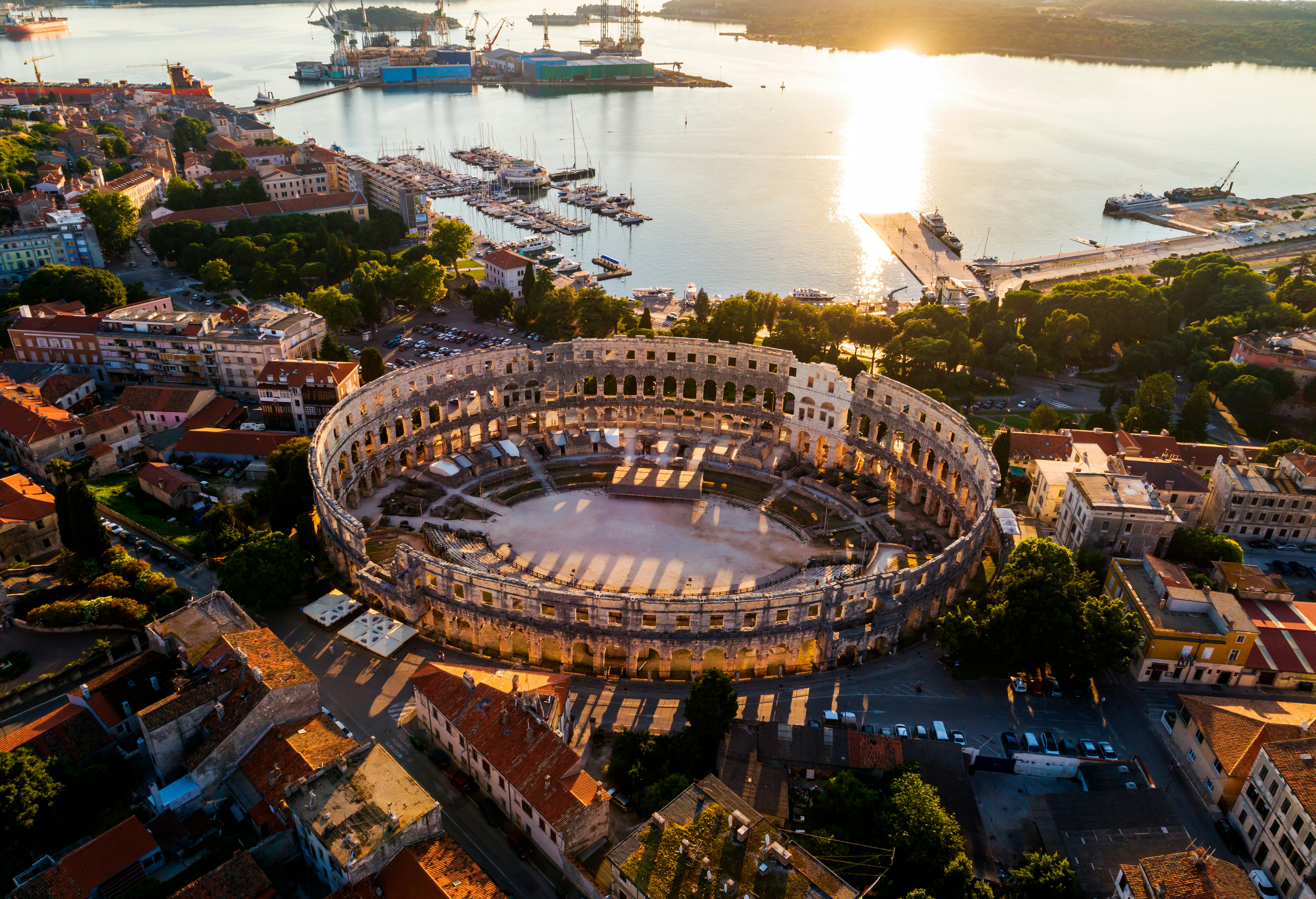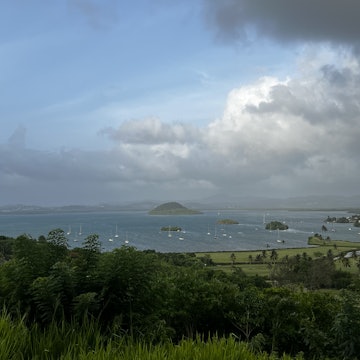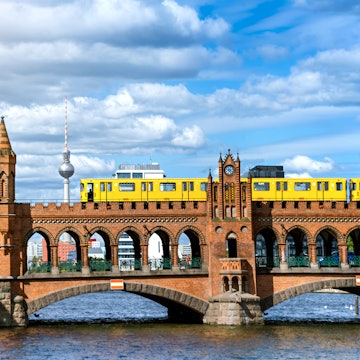
Can visiting lesser-known places offer a better travel experience?

Jul 28, 2020 • 6 min read

Visit the Bolivian equivalent to Christ the Redeemer, looking over the city of Cochabamba © Robert Postma / Design Pics / Getty Images
With COVID-19 pressing pause on the over-tourism box set, the travel industry has the chance to reflect, reassess and reconfigure. But do travelers need to change too? Can traveling beyond blockbuster destinations make trips more rewarding? One writer thinks so.
When this pandemic is over – and yes, that’s a hopeful, hands-clasped, please-make-it-happen "when" – and we emerge blinking from our homes, lugging hastily-stuffed backpacks with us, where will you visit first?
Perhaps you've been scrolling through photos of the cherry blossoms in Japan? Or circling some way-too-cool bars in a New York City guidebook? Maybe you've been waking in the night, sticky with sweat, following another Cinque Terre fever dream?
Not me. There will be no torn-and-tanned bucket list to unfurl from my pocket; no best-rated restaurants to book. Instead, I’ll visit lesser-known destinations where I’m likely to be asked: "What are you doing here?" Here’s why.
It leads to more authentic interactions
Schwump schwump schwump. The windscreen wipers were making heavy work of the ongoing downpour as we crawled blindly around the overhanging foothills of the Colombian Massif. “This road,” the driver shouted over the rain clattering on the bonnet, “it sometimes washes away in weather like this.”
My partner and I weren’t meant to be caught in this storm, even less so this car. We’d been waiting for a bus at the bottom of the road to San Agustín for some six hours. But as a dramatic rainstorm tumbled over the mountain, the last scheduled departure swooshed past, its driver shaking his head.
Fortunately Miguel, who had been following behind the bus, realised we were stranded and pulled over to offer a lift. But had we been stuck outside the Roman Forum or the Sanctuary of Apollo – or any ancient ruins where tourists outnumber residents – would anyone have stopped? It’s doubtful. But in lesser-visited destinations, meaningful interactions like these seem to increase.
We told Miguel about visiting the cartoonish neolithic sculptures of San Agustín Archaeological Park and he recommended we head to Popayán to see where the poet Guillermo Valencia had lived. He’d even be happy to drive us there. We gleefully accepted and treated Miguel to coffee on the gleaming Parque Caldas, Popayán’s bustling 16th-century market square, as a thank you.

You can eat like an actual local
We were a little early for Issoudun’s lunchtime rush, if you could call the six or so office workers who came through the swing doors of Brasserie de la Paix a rush. A line of three would constitute an onslaught in this lovely, little-known Loire Valley town, where the most notable feature is a 27m-high white tower knocked together for Richard the Lionheart in 1195.
But that was the whole point of our visit: we had deliberately taken the slow route between Châteauroux and Bourges, driving past fields of yellow barley and small green woods, looking for somewhere provincial to eat, preferably a bistro offering le menu.
A survey from 2016 revealed that millennials saw authenticity as the most important factor when traveling and fewer restaurants are more genuine than those serving fixed-price menus to locals. But in more popular destinations, particularly near major sights, a restaurant’s authenticity is often knocked to the canvas by its potential profitability.
There was no table-turning at Brasserie de la Paix. What it lacked in metropolitan haste, it certainly made up with blanched asparagus drizzled in a smooth mousseline sauce and tender filet mignon cooked in Dijon mustard. The bottle of dry Muscadet, perfected and bottled a mere tractor’s drive away, felt like a secret sealed and told only in these parts.

It’s cheaper – and there are far fewer crowds
It’s the photo that will light up social media: you stood alone in front of a towering white statue of Jesus Christ against a cloudless blue sky, its robed arms outstretched above a carpet of sun-bleached rooftops and busy city life. The shot looks great, but how did you get Rio de Janeiro’s most iconic tourist attraction all to yourself?
The truth is, you didn’t. This isn’t Christ the Redeemer, the art deco statue that crowns Sugarloaf Mountain, it’s the Bolivian equivalent: the taller, but slightly less elegant, Cristo de la Concordia on San Pedro Hill in Cochabamba. Both are expansive interpretations of the same figure, but the latter is free to visit. Travelers can also climb up the statue itself and they’re likely to be the only ones there.
Swapping blockbuster sights for their lesser-known understudies not only results in smaller crowds, but can help make budgets go further too. For instance, to see the Mona Lisa in the Louvre costs €15, but to see The Prado Mona Lisa, which was painted in Leonardo da Vinci’s workshop at exactly the same time, it costs half that price (or is free each evening).
The question to ask is "why am I visiting?" If you want to see a remarkably-preserved Roman amphitheatre, swap Rome’s Colosseum for Pula’s 1st-century gladiatorial arena; if it’s a dip in alluring blue waters you’re after, head to Albania rather than Iceland. Bucket lists are entirely subjective, budgets and breathing space rarely are.

It offers more unique photography opportunities
It’s easy to tumble down a wormhole of Instagram inspiration, scrolling from one medieval hamlet in France to the white-washed serenity of another Spanish Pueblo Blanco, particularly as both countries essentially host annual beauty pageants for their villages. But where is the thrill in jostling with a coach-load of tourists to take the millionth snap of Riquewihr’s colorful half-timbered houses?
Lesser-known destinations not only offer travelers fresh perspectives, but a chance for unique photo opportunities as well. Frame it right and the Semois River bend in Bouillon, Belgium sweeps as gracefully as the famous First Bend of Yangtze River in Lijiang, China.
Hochburg-Ach in Upper Austria is another never-heard-it-destination that sits fishing by a river. It’s a slow, faceless town that you might only stumble across en route to the most offensively-named village in Europe (for English speakers at least). But at dusk, it reveals its secret: a startling view of Germany’s 12-century Burghausen Castle, bathed in a wonderful golden light with the turquoise Salzach river flows beneath it.

You’ll own the bragging rights when you find the Next Big Thing
The clock was ticking towards the time of milkman’s wake-up call, no hour to really be awake. But in Groningen, a city sort of chucked up towards the North Sea in the Netherlands and left to its own devices, the Russian DJ in the nightclub I was in was bashing at a Kaoss Pad that emitted a series of blips and beeps over a metronomic techno thud.
When it comes to partying, Groningen is no Berlin or Amsterdam, but there is something special about this university city: its youthful heartbeat; the abundance of bars; a gleeful embrace of architectural futurism stacked against the storied canal houses and Amsterdam School oddities; enough terrace cafes to make Paris blush.
It’s car-free, community-orientated and searingly progressive – it’s also somewhere very few tourists seem to get to. But after visiting several times, you can see that change is in the wind, so I’ve been encouraging friends to visit for years.
It recently cut the ribbon on the Forum Groningen, what the city refers to as a “cultural department store". This space lets locals hang out without the obligation to consume – a concept we may see more of across the world if the pandemic guts our high streets for good. But you heard it here first because there’s more to discover at lesser-known destinations.
You might also like:
Ask Lonely Planet: how do I cope with little to no travel?
Traveling right now is a personal choice: here's why I didn't go
The art of escaping the holiday crowds in the UK













